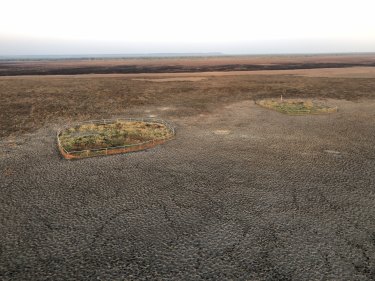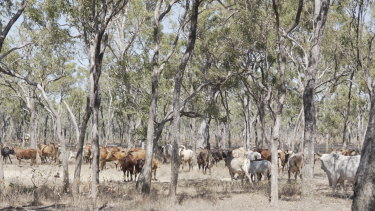Space cowboys Traditional owners track feral herds using AI satellites
Traditional owners across Australia’s Top End are tapping into space-age technology to round up and manage the feral cattle herds which roam across their vast, remote country.
Feral cattle and buffaloes churn up wetlands, destroy native habitat, erode gullies, damage rivers and, on the east of Cape York, send damaging sediment into the waters of the Great Barrier Reef.

Feral buffalo wreak vast damage on nature in the top end and millions are being invested to curb their impacts.
Traditional owners want to know where the herds are and where they will go next, so they can either round them up and sell, or cull them where appropriate, to protect country and cultural sites.
Mimal Land Management Aboriginal Corporation, Cape York Indigenous organisation Aak Puul Ngangtam and Normanby Land management are partnering with CSIRO and Microsoft as well as Darwin and James Cook University to develop new technology.
In a program dubbed Space Cows, feral buffaloes and cattle will be tracked across a 22,000 square kilometre area, taking in the Arafura swamp catchment in Arnhem Land in the Northern Territory, and Upper Normanby and Archer River on Queensland’s Cape York peninsula.
The aim is to create a “digital twin of the landscape†using GPS tagged animals, satellite and weather data. Combined with Microsoft’s Azure Artificial Intelligence platform.
Animals aren’t just tracked across the landscape, traditional owners will be able to see where they will go depending on changes in the climate and weather.
For example, they could get early warning that a herd of buffaloes will hoof it to a particular wetland when the weather is forecast to be hot and dry, enabling traditional owners to round them up or cull them before damage is done to landscape.
CSIRO research scientist Andrew Hoskins said locating feral animals in remote and inaccessible terrain is often the biggest challenge.
“We’re trying to put this next generation artificial visual intelligence and predictive analytical capability in the hands of rangers to give them the ability to manage the landscape and feral animals how they want to,†Dr Hoskins said.
North Australian Indigenous Land and Sea Management Alliance chief executive Ricky Archer said Indigenous peoples’ longstanding links with the northern livestock industry were shifting towards caring for country.
“There is strong interest in sustainable economic opportunities across these sectors,†Mr Archer said. “There is an ongoing challenge to balance the cultural, environmental, and economic outcomes for people on country.

Feral cattle are an economic resource for traditional owners, as well as a source of damage to their country and cultural sites. Credit:Seth Seden.
“To make informed decisions we need to have the best data. To get the best data we need to use appropriate technology. We envisage a wave of digital transformation of the Indigenous land and sea management sector, but this must be driven by Indigenous practitioners in partnership with leading organisations and agencies.â€
Head ranger and traditional owner at Normanby Station in Cape York, Vince Harrigan, said he is expecting new technology to complement traditional cultural management practices and create opportunities for young people to learn new skills.
“The project gives us the latest technology to help with land management and tracking cattle, but also provides training with drones and tablets, which is a big thing for our mob, especially the younger ones,†Mr Harrigan said.
The Morning Edition newsletter is our guide to the day’s most important and interesting stories, analysis and insights. Sign up here.
Mike Foley is the climate and energy correspondent for The Age and The Sydney Morning Herald.Connect via Twitter or email.
0 Response to "Space cowboys Traditional owners track feral herds using AI satellites"
Post a Comment